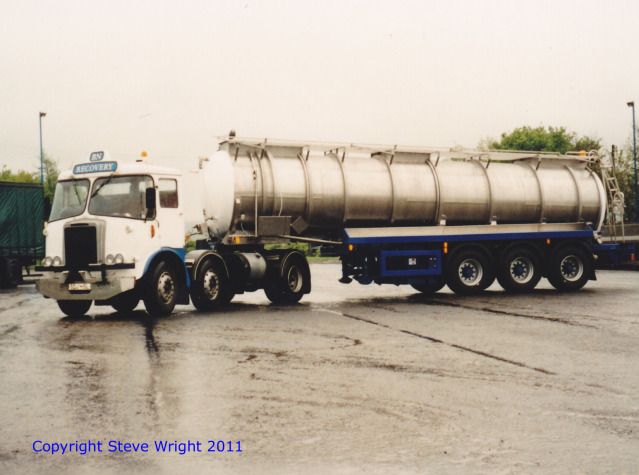
german ■■■,(sorry for spelling ■■■=six in swedish ![]() )
)
Derf:
OK, I get the weight thing with trucks, but what was the point of a chinese 6 coach chassis such as the Bedford VAL?
to many coaches at that time were having front wheel blow outs jeh
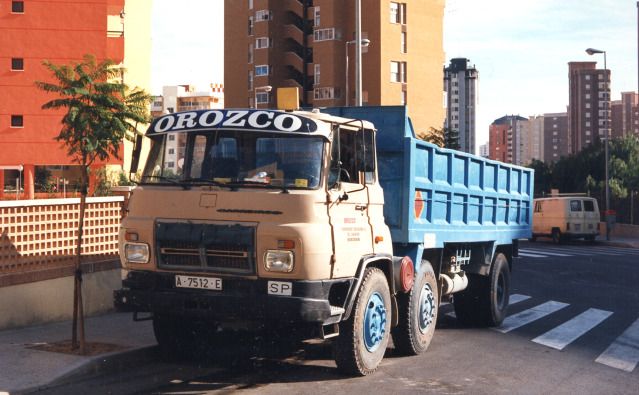

A couple of Barreiros twin steers in Benidorm 1991.
Cheers Phil.


A couple more seen at shows.
seems only scandinavian coutrys in europe did not use china6 ,and could bee the wheatercondissions ,we did have lifting tags since the 50,s mecanich or hydraulic,when it seems other havn,t. hereit took long for even middle axels even lifting get accepted ,and in 6x2 only motors in european trafic seems to prefear them before alifting tag,
In the mid 70,s I drove regularly to France via Le Harvre there was a Southampton company PBC transport (originates from Public Benefit Coal Company?)who ran as their “punishment wagon” a mickey mouse cab yellow twin steer Foden tractor made from a cut down 8 legger,again with no power steering. I often saw it on the RN13 (pre autoroute) at its terminal velocity of 33mph.
Some of the drivers took it with good humour,and got a lot of sympathy.
Does anyone have a picture of it?



Another three including the Leyland.
Sniffy:
I posted this Photo a while back on another thread, lots of speculation about its history but no clear information on who ran these Atkis
This is SDJ 415L, an Atkinson ‘Defender’ 8-legger, new to Sutton’s of St Helens:

After sale, it was converted to a recovery vehicle and operated by Lex Transfleet in Bamber Bridge:
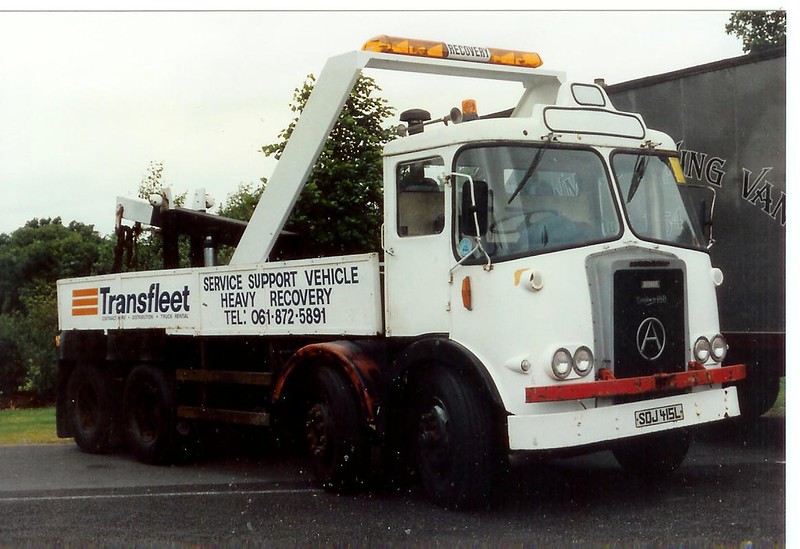
SDJ 415 L by Fodendjp, on Flickr
I think it was the mid 90s when it was cut down to a Chinese 6 tractor - it came to the 1994 Atkinson Rally in Leyland as an 8-wheeler. As I recall, it was used by a commercial garage, and also had a towing jaw on the rear crossmember.
Since your photos, it has been repainted red, and has been out and about at rallies:
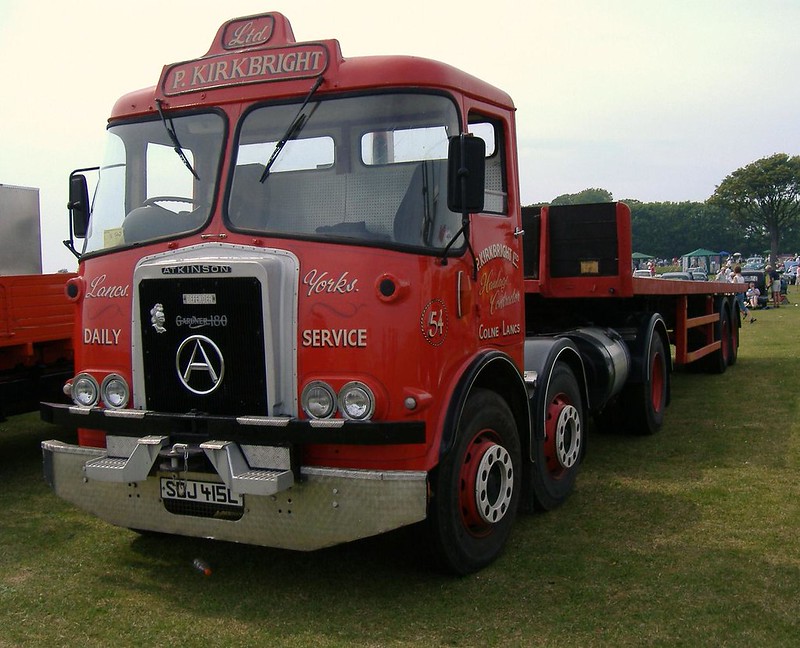
Atki Defender Kirkbright SOJ415L by NorthernSoutherner2010, on Flickr
Was the Sutton 8 wheeler a single drive machine Chris,or was it a double drive Eaton set up? Cheers Dennis.
Bewick:
Was the Sutton 8 wheeler a single drive machine Chris,or was it a double drive Eaton set up? Cheers Dennis.
As far as I’m aware, Dennis, it was the normal Eaton double drive, but I stand to be corrected.
240 Gardner:
Bewick:
Was the Sutton 8 wheeler a single drive machine Chris,or was it a double drive Eaton set up? Cheers Dennis.As far as I’m aware, Dennis, it was the normal Eaton double drive, but I stand to be corrected.
Next question Chris,why would anyone want to decimate a class motor like that Sutton 8 wheeler(which would be one of the last ones to leave Walton-le-dale)and turn it into a tractor unit? I wonder if it was ever "piped up"and operated with one of those superb Sutton drawbar trailers ? Cheers Dennis.
Bewick:
240 Gardner:
Bewick:
Was the Sutton 8 wheeler a single drive machine Chris,or was it a double drive Eaton set up? Cheers Dennis.As far as I’m aware, Dennis, it was the normal Eaton double drive, but I stand to be corrected.
Next question Chris,why would anyone want to decimate a class motor like that Sutton 8 wheeler(which would be one of the last ones to leave Walton-le-dale)and turn it into a tractor unit? I wonder if it was ever "piped up"and operated with one of those superb Sutton drawbar trailers ? Cheers Dennis.
Well, that motor was 2 or 3 years before the end of Atkinson production, Dennis, and I think we can be pretty sure it never saw a trailer at Sutton’s!
Why decimate it? Hmmm, that’s a more tricky question! Each to their own, eh? ![]()
jeh:
Derf:
OK, I get the weight thing with trucks, but what was the point of a chinese 6 coach chassis such as the Bedford VAL?
to many coaches at that time were having front wheel blow outs jeh
Derf, thank you for posting this photo. I saw so beautiful Bedford Chinese six bus on another photo year ago and my first thoughts was I wished to ride with this bus because it seems so comfortable.
Regards
FH13 ![]()
Dave the Renegade:
Another three including the Leyland.
I am impressed by the neat of coverage and use of ropes. There seems to be a pro who has done it. And that Leyland is a good looking truck.
Regards
FH13 ![]()
The Bedford VAL coach was built as a chinese six,for the simple reason that,at that time
there were no axles in the Bedford parts bin capable of dealing with the GVW required,so they
simply increased the number of smaller axles to cope.
Kev73:
The Bedford VAL coach was built as a chinese six,for the simple reason that,at that time
there were no axles in the Bedford parts bin capable of dealing with the GVW required,so they
simply increased the number of smaller axles to cope.
And they needed the extra weight of the second axle to stop it falling over that cliff ![]()
Retired Old ■■■■:
Kev73:
The Bedford VAL coach was built as a chinese six,for the simple reason that,at that time
there were no axles in the Bedford parts bin capable of dealing with the GVW required,so they
simply increased the number of smaller axles to cope.And they needed the extra weight of the second axle to stop it falling over that cliff
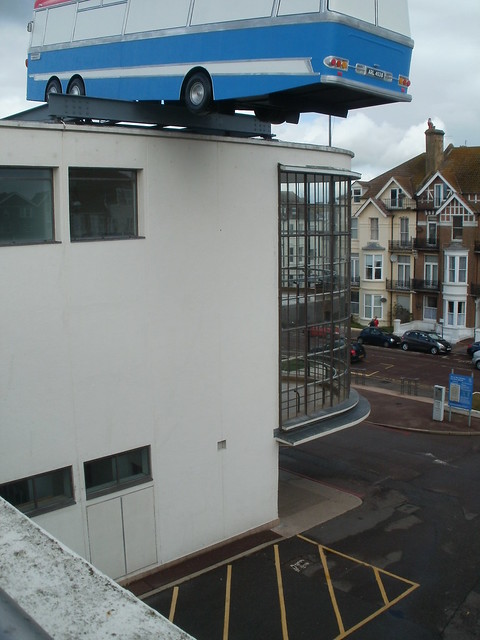
ALR453B by pjlcsmith2, on Flickr

ALR 453B by jwakefield63, on Flickr
Two quotes from the history of the Bedford VAL website which explain the use of the chinese six chassis:
But why did Bedford go for the twin steer arrangement? One key factor was those small 16in diameter wheels. 20in had been virtually universal on both buses & coaches for many years, but there had been, for 15 years or more, a trend in the field of private cars towards the use of relatively smaller wheels. Such refinement led to reduced weight - not only in the wheel itself, but in its associated suspension & steering gear - & to more available space. On a bus or coach chassis the use of two front axles make smaller wheels practical, & allows the floor height to be lowered eliminating wheel arch intrusion. The arrangement brought with it improved ride quality, & moreover, Bedford was able to use existing parts from their TK truck range, obviating the need to develop a new front axle.
One memorable feature of the VAL14 was its distinctive sound. Beneath the floor its Leyland Tiger Cub, 0.400 engine, growled convincingly, but turned the right way up & sat beside the driver, the engine’s growl turned into a positive roar, giving rise to the practice of piling blankets, usually tartan, on top of the engine cover in a futile attempt to stifle the beast!
One feature that made the VAL suitable for the then, new motorway network, was that in the event of a tyre blow-out, the coach would continue to drive normally, & could be brought to a controlled stop.


